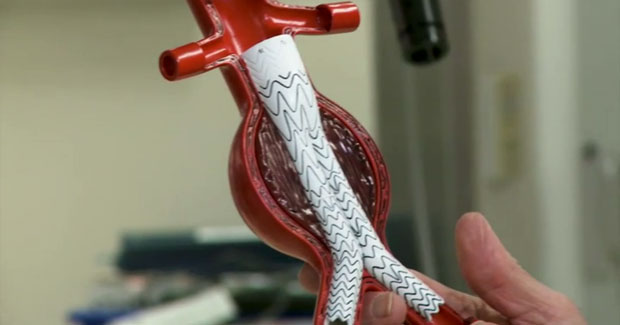Our organism is in an almost perfect gear in which each element fulfills a function. The aorta is one of the main arteries of the human body. He goes through it completely carrying the blood where it is needed. Proper functioning is a sign of health.
However, the passage of the years, a bad eating habit, and even genetics can compromise their integrity and generate an aorta aneurysm or aortic aneurysm. We explain why it’s a danger to your life.
What Is The Aortic Aneurysm?
The aneurysm occurs when the walls of the aorta artery are dilated and there is an increase in blood pressure. In the case of an aortic aneurysm, there is a more than obvious risk, as this artery is responsible for bringing blood to all points of the body. Our life depends on its proper functioning. No palliatives.
Other Causes of Aortic Aneurysm:
Beyond genetics, this disease can also manifest in healthy people, or those with other debilitating diseases. Thus, it is also common to meet patients who have problems with the aortic valve of the birth heart, or if there has been a poorly cured infection such as syphilis. Even traumatic lesions can lead to an obstruction or weakening of the thoracic aorta, responsible for the aortic aneurysm.
Symptoms of Aortic Aneurysm:
How do you know if you’re living an episode of aortic aneurysm? When it comes to identifying the signals that alert you to what is happening inside the body, it is not always simple. In this particular disease, in addition, it is the circumstance that the aneurysm of the chest aorta develops very slowly and almost without symptoms. Cases of patients in whom the aneurysm never broke up have been studied.
Only as the aneurysm grows more obvious symptoms, such as increased breast sensitivity or episodes of pain. It is also common for the budding patient to suffer from continuous and intense backing pains or feel that he drowns and lacks air. Also, among the symptoms of this cardiovascular pathology, is the appearance of snoring and continuous cough.
On the other hand, it must be borne in mind that aortic aneurysms can develop at any of the points of the aorta vein.
In case of breakage, call 911 or the corresponding emergency telephone. You’ll know it’s broken or dissected because you feel a sharper and more sudden pain in your back, chest, arms and even the neck area, or you feel like you have serious difficulty breathing normally.
In the case of having a family history, it is not necessary to check your periodic check as a prevention.
Prevention:
Did you know that cardiovascular diseases are already the leading cause of mortality in developed countries? As we have seen in the causes that explain this disease, the formation of the atherosclerosis plaque is the ultimate origin of all the complications that can arise from an aortic aneurysm. Therefore, prevention in your generation will be key to avoiding any of the cardiovascular episodes described.
So we must control two elements mainly to ensure a healthy life: cholesterol and blood pressure. With both factors under control, we will be providing long-term life insurance. And depending mainly on ourselves (although there is also a genetic part that you can’t control or modify). What are the safety ratios for cholesterol and blood pressure? As for the first, always stay below 200. Regarding blood pressure, the standard must be sought within the nature of the person. In general terms, a blood pressure of less than 130/90 is considered to be a positive values to prevent cardiovascular diseases such as aortic aneurysm. Balanced and active food and lifestyle will help us achieve this goal.
Treatment For Aortic Aneurysm:
When a patient comes with an aortic aneurysm, the doctor’s goal will always be to avoid growth and dissection or breakage. To do this, the most widely used is a mix of medications, reviews, and tests to determine the exact condition of the aorta and the risk of complication. In the most urgent cases, surgery will be chosen, as well as in patients with a family history of the disease. The intervention may be non-invasive or open chest, in which case recovery will be somewhat slower.
To do this, the patient will have to change his lifestyle and make it lighter, avoiding weights and effort and with a very careful diet that avoids the formation of more plates and obstructions at another point in the aorta.
